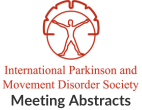Session Information
Date: Thursday, June 23, 2016
Session Title: Dystonia
Session Time: 12:00pm-1:30pm
Location: Exhibit Hall located in Hall B, Level 2
Objective: We aimed to analyze frequency and localizations of sensory tricks in patients with cervical dystonia (CD).
Background: CD is characterized by continuous or intermittent contractions of cervical muscles leading to posture abnormalities. Sensory trick (geste antagonist) means disappearance or reduction of contraction by light touch. It may present in any type of dystonia and may have a diagnostic significance.
Methods: All consecutive patients with CD who were admitted between March 2015 and September 2015 were prospectively included in the study and were questioned using a questionnaire for presence and localizations of sensory tricks. Age, gender, disease duration, CD type and etiological factors were also recorded.
Results: There were 30 CD patients who were examined in the study period. Of them, 23 (76.7%) declared presence of sensory tricks which were ipsilateral to the contraction side in 13 patients (56.6%), contralateral to the contraction side in 5 patients (21.7%) and bilateral in 5 patients (21.7%). Sensory tricks were not related to etiological factors.
Conclusions: Sensory tricks are highly encountered in CD when questioned specifically. Recognition of sensory tricks may provide clues for sensorimotor integration in the pathogenesis of CD.
To cite this abstract in AMA style:
A. Gündüz, A.D. Elmali, G.S. Koçak, N. Uzun Adatepe, F. Karaali-Savrun, M. Kiziltan. Sensory tricks in cervical dystonia [abstract]. Mov Disord. 2016; 31 (suppl 2). https://www.mdsabstracts.org/abstract/sensory-tricks-in-cervical-dystonia/. Accessed December 16, 2025.« Back to 2016 International Congress
MDS Abstracts - https://www.mdsabstracts.org/abstract/sensory-tricks-in-cervical-dystonia/
